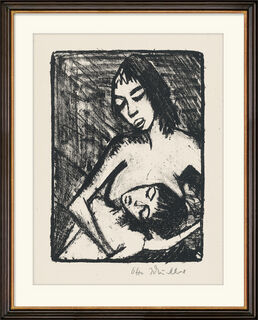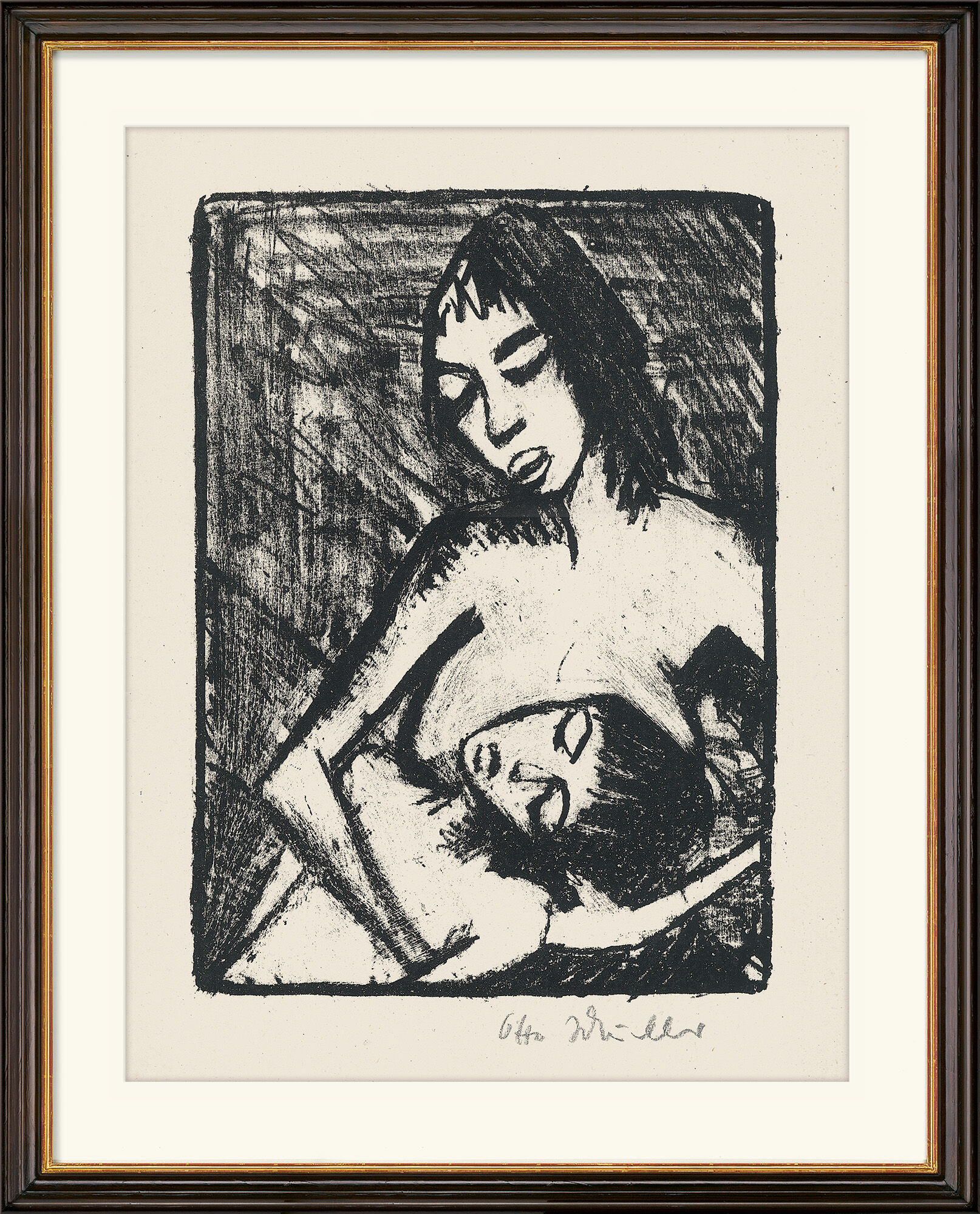Picture "Mother and Child 2 (small version)" (1920)


Picture "Mother and Child 2 (small version)" (1920)
Quick info
limited, 30 copies | numbered | signed | lithograph on handmade paper | framed | size 50 x 42 cm
Detailed description
Picture "Mother and Child 2 (small version)" (1920)
The lithograph "Mother and Child 2" can also be found titled "Maschka and Eugen, small" and was created in 1920, the year Mueller and his wife separated. Maschka appears in the picture, holding her nephew Eugen in her arms. The motif is said to have been created because Mueller's former wife was often mistaken for her nephew's mother.
Original lithograph, 1920. edition: 30 copies on handmade paper, numbered and signed by hand. Motif size 26 x 18,7cm. Sheet size 35.5 x 26.5 cm. Size in handmade frame 50 x 42 cm as shown.
About Otto Mueller
1874-1930
Otto Mueller was one of the most important representatives of German Expressionism. According to reports by contemporaries, he was a taciturn, withdrawn, even stubborn person. Even though he was a member of the artists’ group "Die Brücke" since 1910, Mueller went his own way artistically. In many stylistic elements, his work is very similar to that of his fellow artists’ group members, but it differs from them in its emphasis on naturalness. Because of his artistic search for the "paradisiacal" in the connection between humans and nature, he was considered an expressionistic romantic.
Mueller was a close friend of the also introverted Wilhelm Lehmbruck. His female nudes set in earthy green landscapes are famous. So are the numerous versions of a theme that preoccupied him throughout his life: the half-exotic, half-fantastic-looking "gipsy" portraits. But his landscape paintings also reveal his independence. Their two-dimensional structured elements in muted colours and their strictly composed composition, are comparable to the great late work of Paula Modersohn-Becker.
The field of graphic arts, that includes artistic representations, which are reproduced by various printing techniques.
Printmaking techniques include woodcuts, copperplate engraving, etching, lithography, serigraphy.
Collective term for the painters and sculptors of the 20th century, such as Pablo Picasso, Salvador Dalí, Joan Miró, Marc Chagall and others, whose works are the most recognized in our times.


